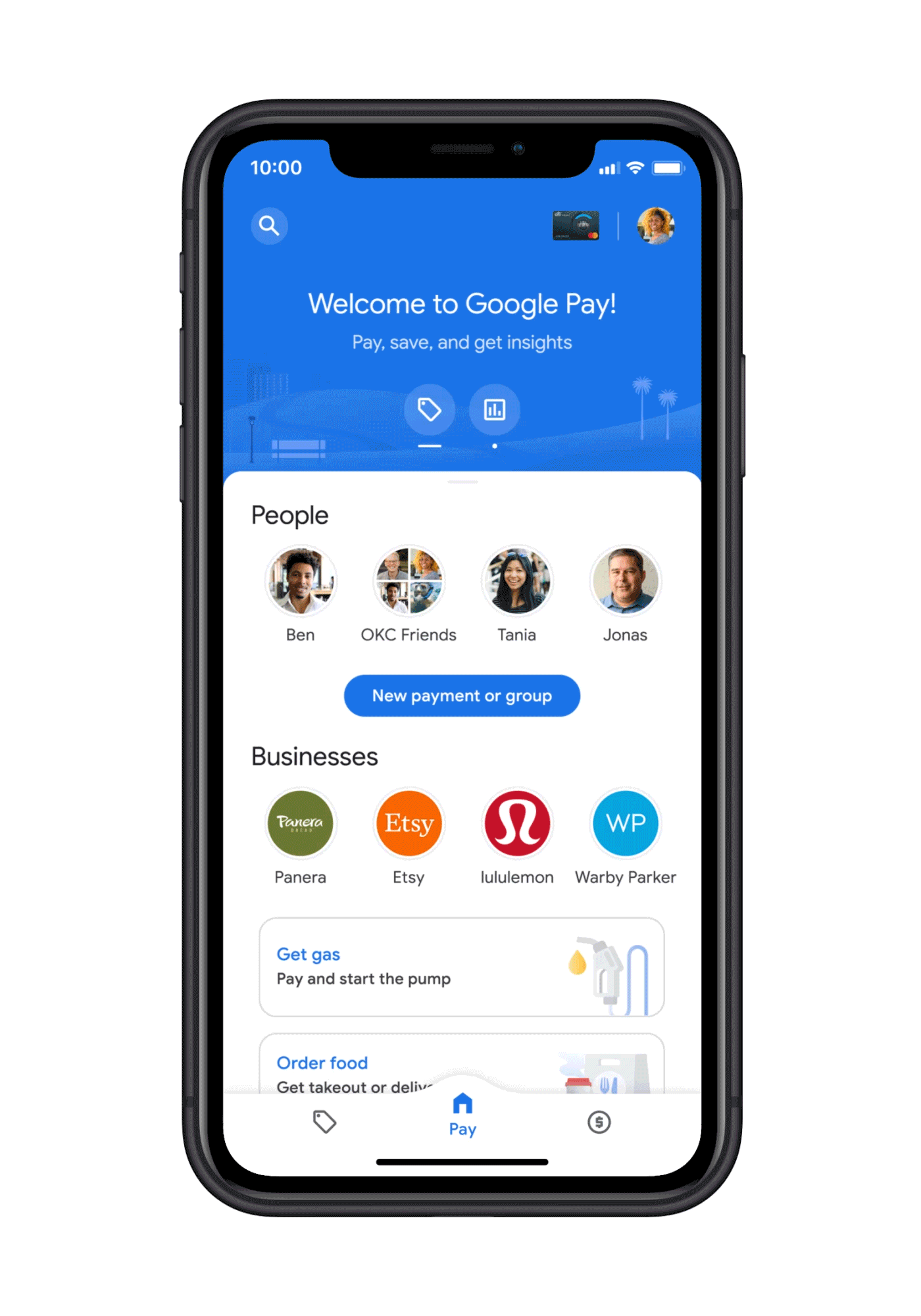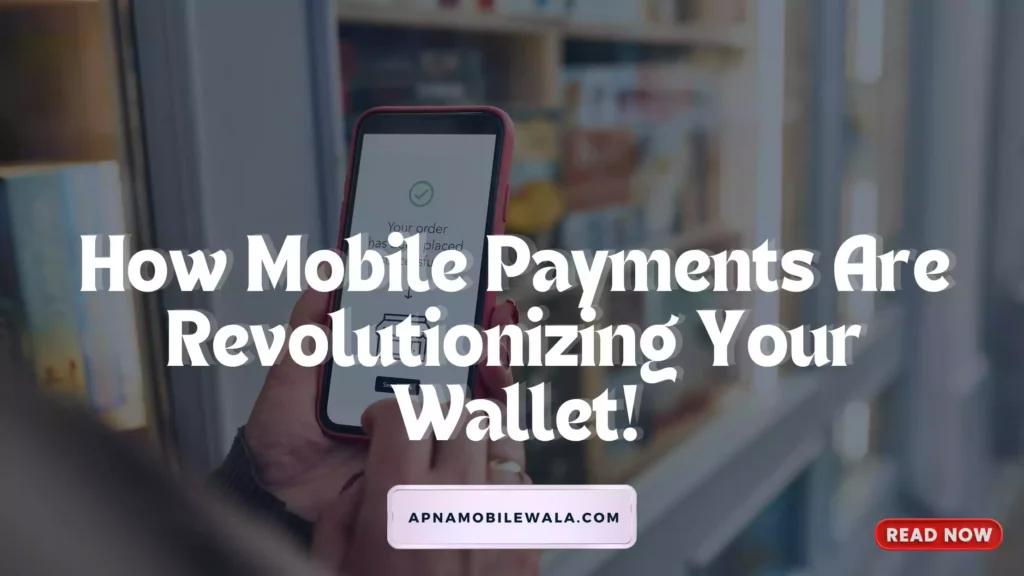The Power of Mobile Payments: A Cashless Future?
The jingle of coins and the rustle of bills are becoming a distant memory. In their place, a new era of financial transactions has emerged: mobile payments. With a tap of your phone or a Scan of a QR code, you can buy anything from a cup of coffee to a car. But mobile payments are about more than just convenience; they hold the potential to revolutionize the way we interact with money.
The Rise of the Digital Wallet
At the heart of mobile payments lies the digital wallet. These secure apps store your credit card, debit card, and loyalty card information, allowing you to pay with ease. Popular options like Apple Pay and Google Pay leverage Near Field Communication (NFC) technology, enabling contactless payments at stores equipped with compatible terminals.
Advantages of Mobile Payment
Mobile payments offer a plethora of advantages for both consumers and businesses, making them a compelling alternative to traditional cash and card transactions. Here’s a breakdown of the key benefits:
For Consumers:
- Convenience: Ditch the bulky wallet! Mobile payments are the epitome of convenience. You can carry everything you need in your phone, eliminating the need to juggle cash, cards, and loyalty programs.
- Speed: Transactions are lightning-fast compared to swiping cards and waiting for approvals. Simply tap your phone or scan a QR code, and you’re done!
- Enhanced Security: Mobile wallets encrypt your financial data and often require fingerprint or facial recognition for authorization, making them more secure than carrying physical cards. Even if your phone is lost or stolen, your financial information is protected.
- Better Budgeting and Tracking: Most mobile payment apps provide detailed transaction records, allowing you to effortlessly track your spending habits and manage your budget more effectively.
- Rewards and Loyalty Programs: Many mobile wallets integrate seamlessly with loyalty programs, enabling you to earn points and redeem rewards directly at checkout.
For Businesses:
- Reduced Costs: Mobile payments eliminate the need for expensive card readers and can streamline the checkout process, reducing operational costs.
- Faster Checkout Lines: Quicker transactions translate to shorter queues, improving customer experience and potentially increasing sales.
- Wider Customer Reach: By offering mobile payment options, businesses cater to a growing segment of customers who prefer contactless payments.
- Valuable Data Insights: Mobile payment transactions provide valuable customer data that businesses can leverage to personalize marketing campaigns and promotions.
- Improved Cash Flow: Mobile payments often result in faster access to funds compared to traditional methods, improving a business’s cash flow.
Overall, mobile payments offer a win-win situation for both consumers and businesses. They provide convenience, security, and efficiency, paving the way for a smoother and more streamlined financial future.
Disadvantage of Mobile Payments
Mobile payments, while undeniably convenient, come with some drawbacks that we should consider. Here are some of the key disadvantages:
- Security Concerns: Although mobile wallets offer strong encryption, there’s always a risk. Data breaches, malware attacks, or lost phones can expose your financial information if not properly safeguarded.
- Limited Acceptance: While mobile payments are gaining ground, they aren’t universally accepted. Smaller stores or vendors in remote areas might still rely on cash or traditional cards.
- Technical Dependence: Mobile payments rely on technology. A dead phone battery, weak internet connection, or software glitches can disrupt your transaction, leaving you stranded without a backup option.
- Not Universally Accessible: Not everyone has access to smartphones or the technical know-how to use mobile payment apps. This can create a digital divide, leaving some people behind.
- Potential Fees: Some mobile payment providers might charge transaction fees, especially for international payments. Be sure to understand the fee structure before using a particular app.
- Privacy Considerations: Mobile payments generate a lot of data about your spending habits. While some users might be comfortable with this, others might have concerns about privacy and data security.
Overall, mobile payments are a powerful tool, but it’s important to be aware of the potential downsides. Weighing the advantages and disadvantages can help you decide how and when to integrate them into your financial routine.
The Road to a Cashless Future
While mobile payments are on the rise, cash remains a popular option for many. However, several factors are driving the adoption of mobile wallets:
- The Increasing Popularity of Smartphones: Smartphones are practically an extension of ourselves, making mobile payments a natural extension of our daily lives.
- Government Initiatives: Many governments are encouraging the use of digital payments to improve financial inclusion and transparency.
- Security Improvements: As security features continue to evolve, consumers are becoming more comfortable with mobile payments.
A Future Filled with Possibilities
The future of mobile payments is brimming with possibilities. We can expect to see:
- The Rise of Biometric Authentication: Fingerprint and facial recognition can add an extra layer of security to mobile wallets.
- Integration with Loyalty Programs: Mobile wallets could seamlessly integrate loyalty programs, offering a more rewarding shopping experience.
- Offline Payments: Mobile payments could function even without an internet connection, expanding their reach to underserved areas.
Are We Going Completely Cashless?
While mobile payments are undoubtedly transforming the financial landscape, a complete cashless future is not guaranteed. Cash may still hold value for reasons like privacy or lack of access to technology. However, there’s no doubt that mobile payments are the way forward, offering unparalleled convenience, security, and efficiency. So, the next time you’re at the checkout counter, consider leaving your wallet behind and embrace the power of mobile payments.
How Does Mobile Payment Work
Mobile payments work through a clever combination of technology and security features:
1. The Digital Wallet:
- Apps like Apple Pay, Google Pay, or Samsung Pay act as your digital wallet. You securely store your credit card, debit card, and loyalty card information within these apps.
2. Near Field Communication (NFC):
- This is the magic behind contactless payments at stores. When you hold your phone near a contactless payment terminal, NFC allows the devices to communicate wirelessly.
3. Secure Data Transmission:
- Your actual credit card details are never transmitted during the transaction. Instead, a unique token representing your card is sent for verification. This adds a layer of security.
4. Authentication:
- Before completing the payment, you’ll likely be prompted to verify your identity using your fingerprint, facial recognition, or a PIN.
Here’s a breakdown of the steps involved in a typical mobile payment:
- At the Checkout: You select the mobile wallet option at the store’s payment terminal.
- Tap and Pay: Hold your phone near the contactless reader.
- Device Communication: The phone and terminal communicate securely using NFC.
- Tokenized Transaction: A unique token, not your actual card details, is sent for authorization.
- Authentication: You verify your identity using fingerprint, facial recognition, or PIN.
- Payment Processing: Once authorized, the payment is processed between your bank and the store’s bank.
- Transaction Complete: You’ll see a confirmation on your phone, and the receipt might be displayed digitally.
Additional Considerations:
- While NFC is common, QR code payments are also gaining traction. Here, you scan a QR code displayed by the store to initiate the payment.
- Mobile payments can also be used for online transactions and peer-to-peer transfers through apps like Venmo or PayPal.
So, next time you’re out and about, ditch the bulky wallet and embrace the secure convenience of mobile payments!
Mobile Payment Apps
Mobile payment apps have become an increasingly popular way to pay for goods and services. They offer a convenient and secure way to make transactions without the need for cash or physical credit cards. There are a number of different mobile payment apps available, each with its own features and benefits. Here are a few of the most popular ones:
- Apple Pay: Apple Pay is a mobile payment and digital wallet service developed by Apple Inc. It allows users to make payments in person with their iPhone, iPad, or Apple Watch. Apple Pay can also be used for online payments and in-app purchases.

- Google Pay: Google Pay is a digital wallet and online payments platform developed by Google. It allows users to make in-store payments using Near Field Communication (NFC) technology with supported mobile devices. Google Pay can also be used for online payments and in-app purchases.

- Samsung Pay: Samsung Pay is a mobile payment and digital wallet service developed by Samsung Electronics. It allows users to make payments in person with their Samsung smartphone or smartwatch. Samsung Pay can also be used for online payments and in-app purchases.

- Venmo: Venmo is a mobile payment service owned by PayPal. It allows users to transfer money between friends and family. Venmo is a popular option for splitting bills, paying for group outings, and sending money as gifts.

- Cash App: Cash App is a mobile payment service developed by Square, Inc. It allows users to transfer money between friends and family, as well as make and receive payments for goods and services. Cash App also offers a debit card that can be used for online and in-store purchases.

- Zelle: Zelle is a person-to-person (P2P) payment service that allows users to send and receive money directly between bank accounts. Zelle is available through a number of different banking apps.

These are just a few of the many mobile payment apps available. The best app for you will depend on your individual needs and preferences. Consider factors such as the types of payments you want to make, the devices you use, and the security features that are important to you.
Examples of Mobile Payments:
Mobile payments come in a few different flavors, depending on where you’re using them and what technology is involved:
- Mobile Wallets (NFC): These are the most common examples, using apps like Apple Pay, Google Pay, or Samsung Pay. You simply hold your phone near a contactless payment terminal at stores to pay.
- QR Code Payments: This method involves scanning a unique QR code displayed by the seller using your phone’s camera. The code initiates a secure payment through a linked app.
- In-App Purchases: Many apps allow you to directly purchase items or services within the app itself. Your payment information is usually stored securely within the app.
- Peer-to-Peer (P2P) Payments: Apps like Venmo, Cash App, or Zelle allow you to send and receive money directly between friends and family.
- Mobile Banking Apps: While not strictly mobile payments, some bank apps allow you to pay bills or transfer funds directly from your phone.
Future of Mobile Payments
The future of mobile payments is brimming with exciting possibilities, promising an even more seamless and integrated experience. Here are some key trends to watch out for:
Enhanced Security:
- Biometric Authentication: Fingerprint, iris scan, or facial recognition will likely become the norm, adding an extra layer of security and eliminating the need for PINs or passwords.
- Tokenization: Advanced tokenization techniques will further shield your financial data by using unique digital tokens instead of actual card details during transactions.
Greater Integration:
- Super Apps: Imagine a single app for everything! Super apps, combining mobile payments with other functionalities like ride-hailing, messaging, and social media, are predicted to gain traction.
- Internet of Things (IoT): Mobile payments could become integrated with everyday objects. Imagine paying for your groceries by simply walking out of the store with your phone in your pocket!
Emerging Technologies:
- Blockchain: Blockchain technology, known for its secure and transparent nature, could revolutionize mobile payments by facilitating faster and more secure cross-border transactions.
- Cryptocurrency Integration: While still in its early stages, cryptocurrency wallets could potentially be integrated with mobile payment apps, offering more payment options to users.
Focus on Inclusivity:
- Offline Payments: Mobile payment solutions that function even without an internet connection could be developed, reaching users in underserved areas with limited connectivity.
- Financial Literacy Initiatives: Efforts to educate users, particularly those unfamiliar with technology, will be crucial for the wider adoption of mobile payments.
A Look Ahead:
While a completely cashless future might not be imminent, mobile payments are undoubtedly on track to become the dominant mode of transactions. As technology continues to evolve and security features become even more robust, mobile payments promise to revolutionize the financial landscape, offering unparalleled convenience, security, and efficiency for everyone involved.
Thanks for Reading!
- How Will We Access Virtual Worlds on Our Phones?
- The Rise of the Subscription Phone
- Sony Xperia 1 VI Price and Review
- Realme 12 Pro Plus Review and Price
- OnePlus Nord CE4 Review and Price



